When it comes to getting subscribers to take action, email marketing is often all about the art of persuasion. Whether it’s getting them to open your email with an enticing subject line or click on a link with a persuasive call-to-action.
And this where an understanding of marketing psychology can really help.
Knowing how consumers typically behave and respond to certain cues can make all the difference to your open and click rates. So that’s why we’ve rounded up five key marketing psychology hacks to improve your email campaign performance.
But let’s start with a look at what marketing psychology actually is.
Page Contents
What is marketing psychology?
Marketing psychology is the use of proven psychological theories of influence and persuasion to inform marketing and sales strategies. And it’s used by all types of businesses to increase sales and build stronger customer relationships.
The link between psychology and marketing dates back to the advent of advertising. But renowned psychologist, Robert Cialdini, helped make it popular with his 1984 book, Influence: The Psychology of Persuasion. He emphasised the importance of psychology in marketing and identified six key principles. A few of which you’ll read about in this article.
Knowing how people think and what influences their behaviour is essential in marketing – email marketing included. In fact, using marketing psychology can help your emails stand out in crowded inboxes and increase engagement.
So let’s now look more closely at five psychological hacks you should be using in your email campaigns.
1. Scarcity
Scarcity relies on the fear of missing out. When products or services are in a limited supply, customers feel an urgent need to buy.
As an experiment, researchers Mittone & Savadori asked 180 university students to pick from a selection of items including ballpoint pens, rulers and pencils. Some of the items were in small quantities while others were in abundance. The researchers found that students were more likely to pick the items that were in limited supply. And they concluded that products can increase in perceived value when there are less of them available. Which is known as the scarcity bias.
A prime example of how scarcity is used is during Black Friday, when discounts are only available for a limited time – whether that’s a day, weekend, week or however long Black Friday deals last these days. The FOMO feeling of missing out on a good discount is why Black Friday is so popular.
How to use scarcity in your email campaigns
Scarcity is a great tactic used in email marketing to boost sales. If you’re an ecommerce brand, you can send an email promoting limited edition or limited supply products. If you’re a blogger or author, you can grant time-limited access to content to get more subscribers to click on your links.
In the example below, book retailer Barnes & Noble remind customers that there is only a limited time left to take advantage of their 15% off sale. By using the phrases ‘time is ticking’ and ‘expires soon’, Barnes & Noble are creating a sense of urgency for customers to buy their products during the sale.
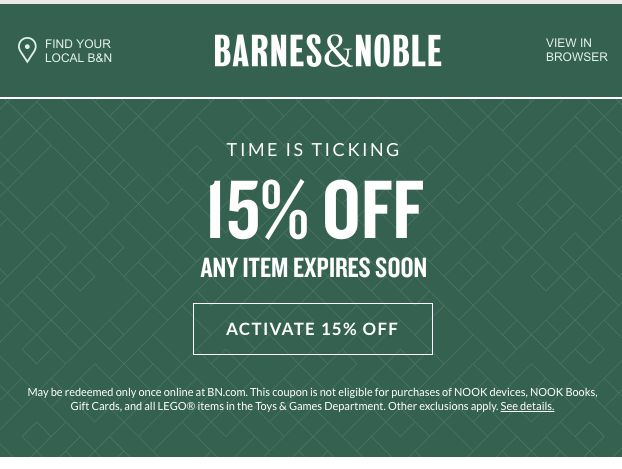
2. Exclusivity
We all love to feel part of the in-crowd, which is why exclusivity can be so effective. Being invited to join an activity or becoming a recognised member of a group makes us feel good.
Feeling ‘exclusive’ taps into our human need for a sense of belonging and high self-esteem. Which, according to Maslow’s Hierarchy of Needs, are two of our essential psychological needs. Making customers feel that they are a part of something is a great way of turning your product or service from WANT to a NEED. And that helps create greater demand.
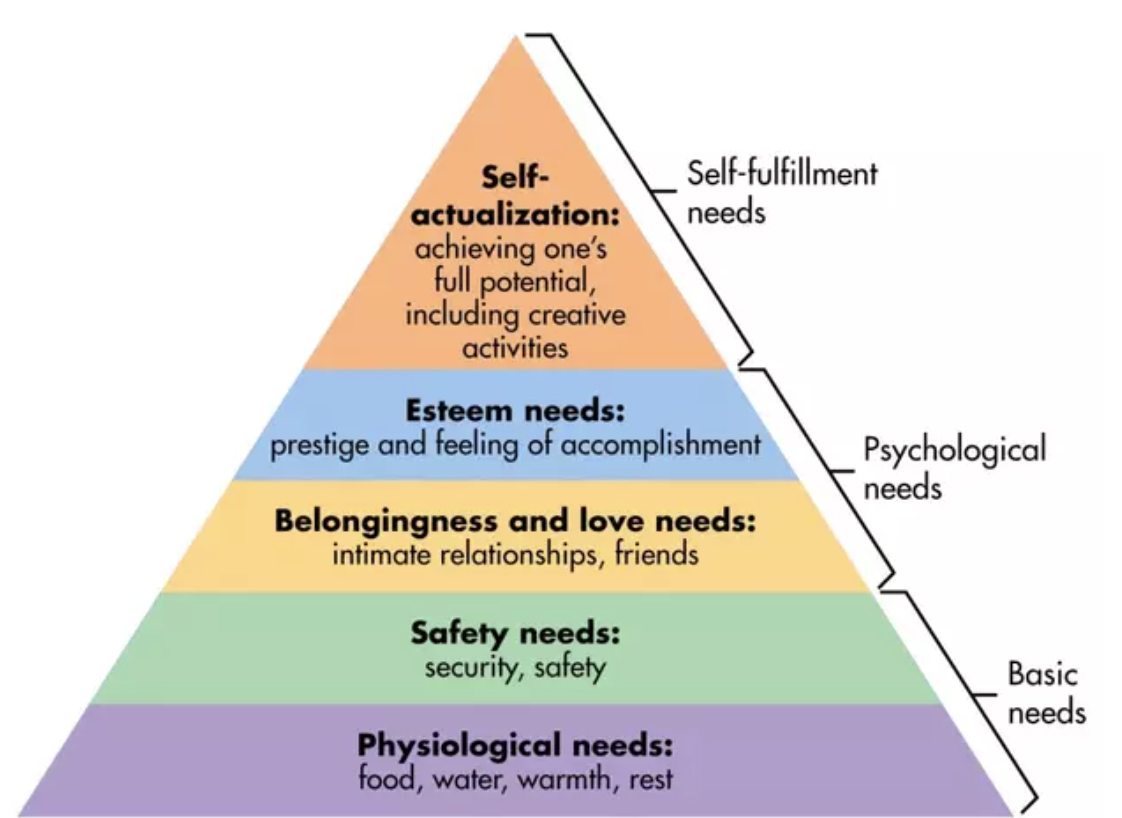
How to use exclusivity in your email campaigns
Applying exclusivity to emails can mean offering a premium product at a premium price for those who like a little luxury. Or you can use language that implies exclusivity. Using words or phrases such as “members only” or “item selected just for you” makes the reader feel special.
There are many other ways of using email marketing to make your readers feel exclusive.
You can set up a membership group or have a name for your subscribers, like Ariana Grande calls her fan base ‘Arianators’. Within these groups you can promote exclusive discounts or content.
Adidas provide another example of this tactic. Last year Adidas UK introduced their ‘Creators Club’ membership. Members receive exclusive discounts, rewards and Adidas-related news. In the email below, Adidas is promoting the exclusive benefits of their Creators Club to give customers more reason to shop with them.
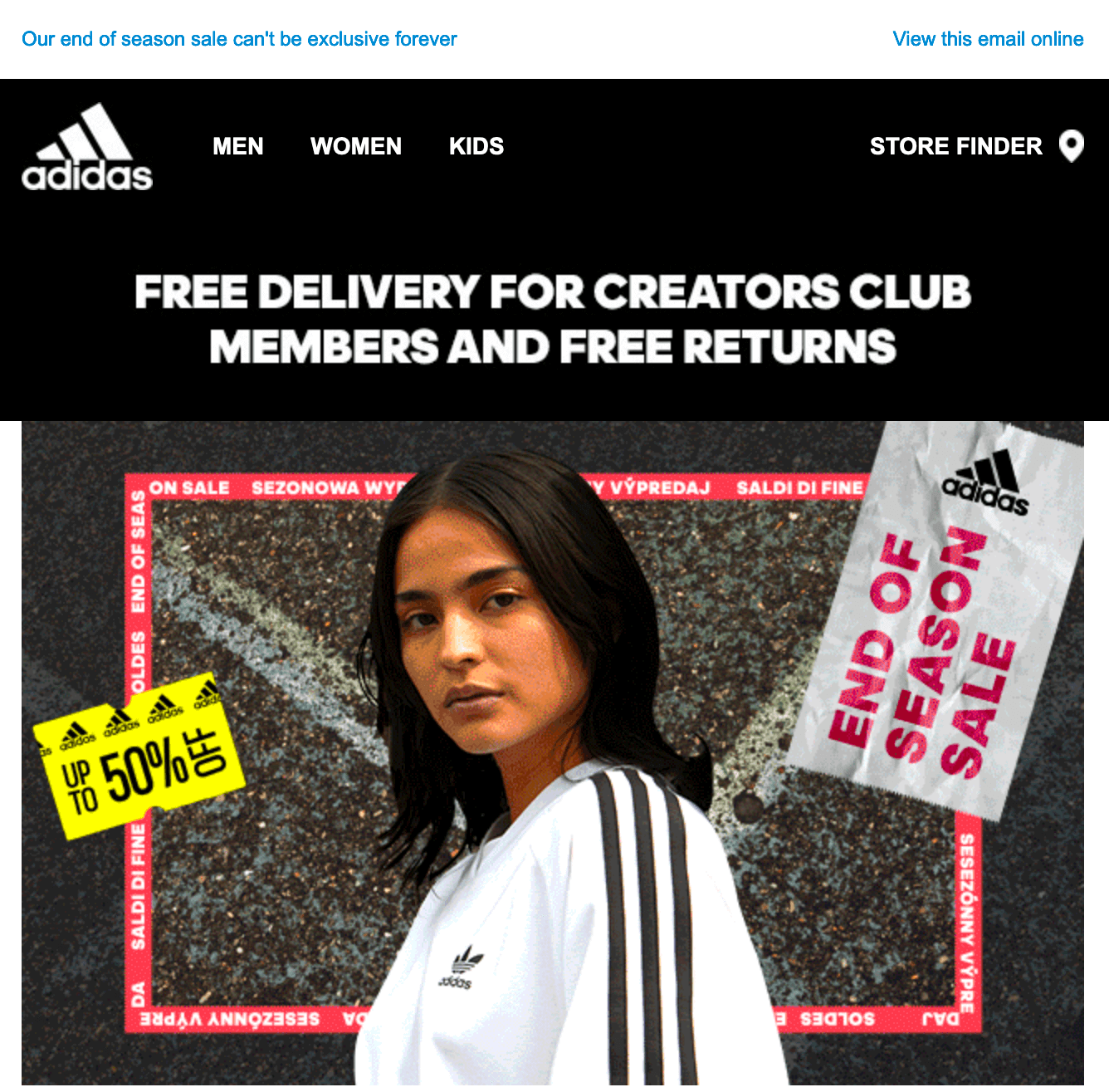
You can also use the principle of exclusivity when asking customers for valuable data. If you want your customers to take part in a survey, try saying “you have been selected to take part in our survey”, instead of “please take part in our survey”. By addressing each customer individually (“you”) and suggesting that they have been personally chosen to give feedback, you make them feel more valuable. And that their response truly matters.

3. Reciprocity
As the saying goes, “if you scratch my back, I’ll scratch yours”. This is true even in email marketing. And it should come as no surprising that humans respond well to freebies.
Professor Daniel Regan’s experiment showed how reciprocity can be useful. In the experiment, each participant was asked to rate artwork with a partner (who, unknown to them, was a research associate). During the exercise, the partner left the room. For half the participants, the partner came back with a free soft drink. For the other half, the partner came back empty handed. The partner then asked the participant to buy them a raffle ticket. The participants who were given a free soft drink were much more likely to buy the partner a raffle ticket.
The lesson here is that giving something away for free makes the recipient more likely to do something for you. And that’s why businesses like to offer a free gift with purchase or one-month free trials.
How to use reciprocity in your email campaigns
Offer something free – like product samples or useful content – to your readers and they are more likely to respond to your requests. If you’re an author or blogger, you can offer content assets, such as ebooks or templates, in exchange for a website visitor’s email address. This is called a ‘lead magnet’ and is a great way to build your mailing list.
For example, one of our customers, author Liz Gavin, offers readers an exclusive story if they sign up to her mailing list.
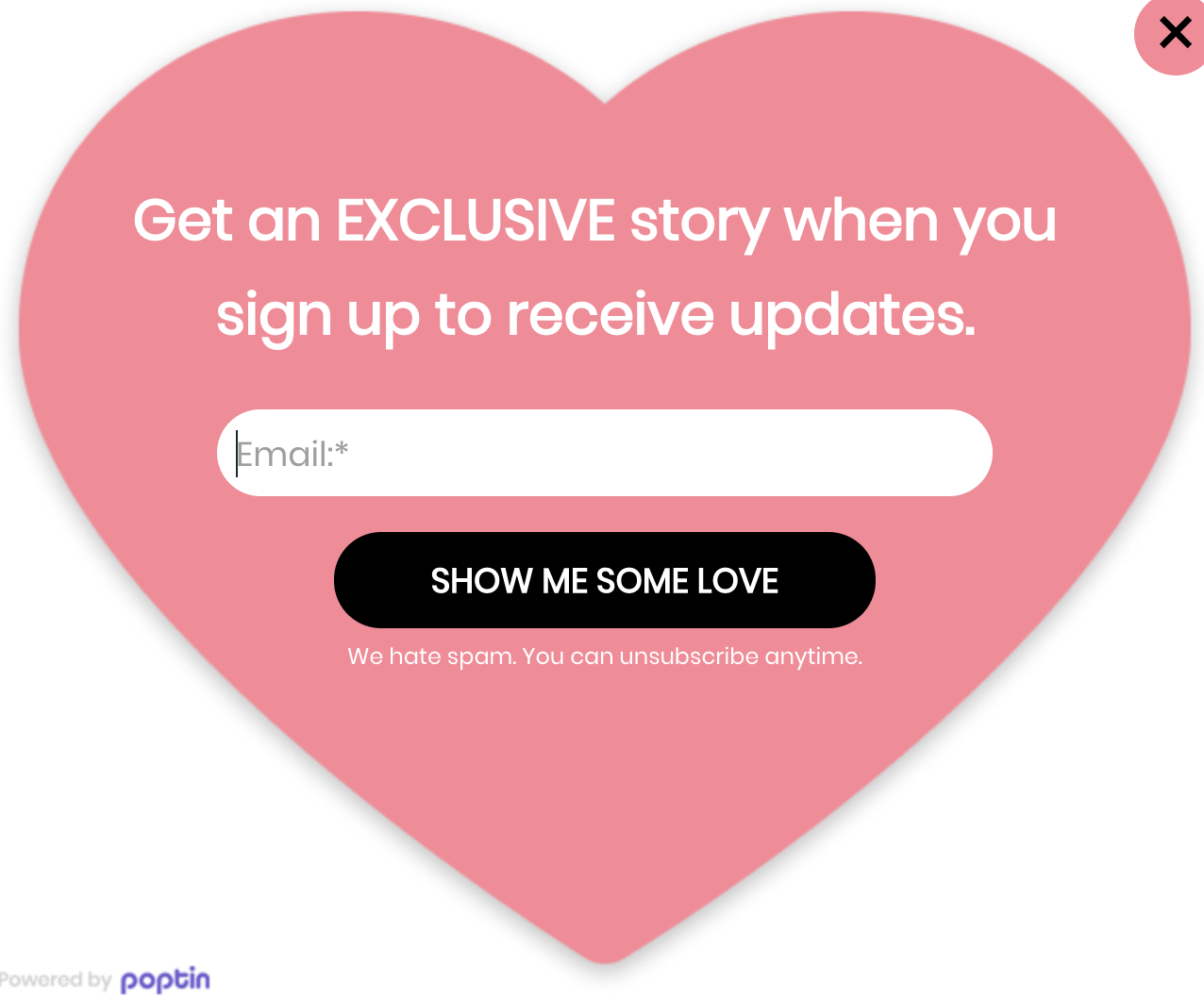
4. Social proof
Have you ever brought something because a friend recommended it? Or because you saw a celebrity post about it on Instagram?
That’s how social proof works.
Endorsements, customer reviews and influencer recommendations are all examples of social proof used in marketing. You only have to switch on the TV during ad breaks to see social proof in action. From celebrity brand ambassadors to Which? approved products, we are all influenced by other people’s opinions.
A well-known experiment by Solomon Asch demonstrated how other people can influence our decisions. Solomon showed a group of participants the two pictures below and asked which line (A, B or C) in the second picture is the same length as the line in the first picture (left).

What the participants did not know is that the majority of the group was made up of research assistants. The research assistants would speak first and say that the line on the left is the same length as line A, even though the answer is clearly line C. Surprisingly, a portion of the participants were swayed by the research assistants and also said the line is the same length as line A. The experiment was repeated multiple times with the same result.
The participants were peer-pressured into saying the line was the same length as line A. Asch called this conformity. The experiment shows how humans are easily influenced by others. And celebrities and influencers hold even greater power because they are idolised by so many in today’s society.
With the rise of social media and ecommerce, influencer marketing has become more and more popular. According to the Digital Marketing Institute, 46% of consumers rely on influencer reviews and recommendations for their purchasing habits. This shows just how effective social proof can be.
How to use social proof in your email campaigns
Celebrity endorsements and paid influencer campaigns can be pricey. Thankfully, there are plenty of other types of social proof. Including customer reviews and ratings of your products works just the same. Showing social proof that other people like your product or content is a great way to attract new customers.
BakeKits, another one of our customers, uses social proof on their website by listing the press and media coverage they’ve received. As they have grown, they have received more and more media attention – and now even Gordon Ramsay follows them!
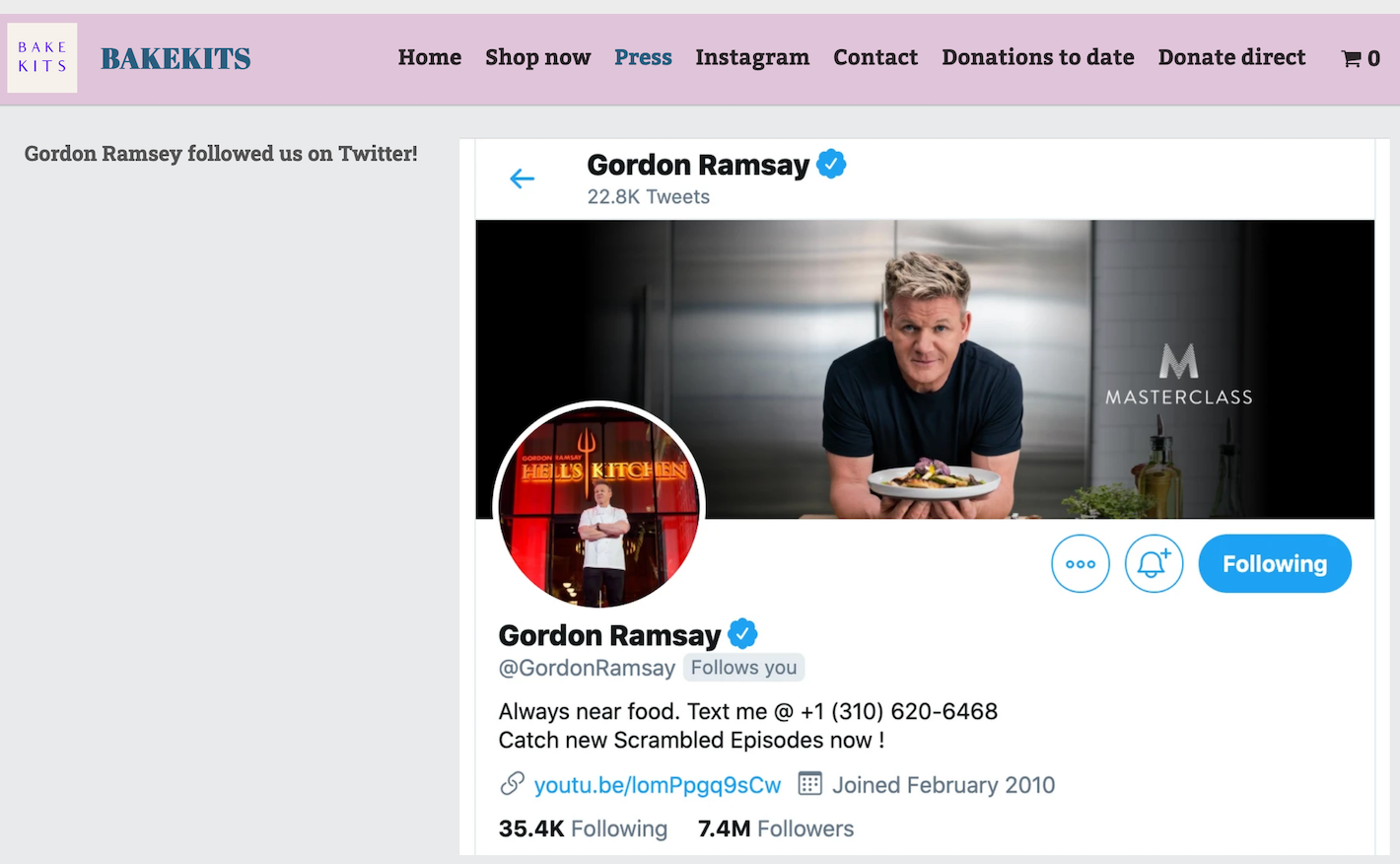
Charities can also use social proof to increase donations. By showing the number of people who have already donated to a cause, charities can encourage others to do the same.
For more ideas, check out our article on how to use social proof in your email marketing campaigns.
5. The foot-in-the-door tactic
Getting your foot in the door can be tricky. Consumers can be very reluctant to give up their time, data or money. So start with smaller, simpler requests first.
A study by Freedman & Fraser revealed how foot-in-the-door tactic works. They initially asked a group of Californian homeowners to put a large ‘drive safely’ sign in front of their house. Only 17% said yes.
Then they went to a different group of Californian homeowners and first asked if they could place a small ‘drive safely’ sticker on the front of their house. Almost all of the participants agreed. A few weeks later, the researchers went back to the homeowners with the sticker and asked them to put up the large sign. 76% of them said yes!
The study shows that people are more likely to give in to big requests if they have agreed to smaller ones first. And so customers are more likely to buy a product if they have had to make an account or sign-up for email updates.
How to use the foot-in-the-door tactic in your email campaigns
The foot-in-the-door tactic can be used to persuade readers to give you data or indicate preferences. It may be better asking for bare minimum data (e.g. name and email) during the initial sign-up. But then further data can be collected using one-question surveys, like this one, in an email from Dropbox.
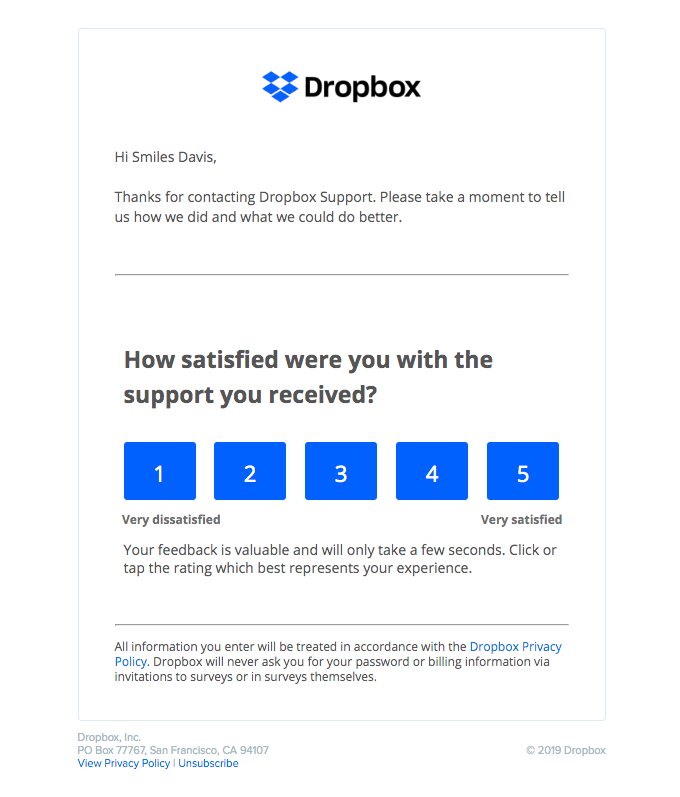
Using a one-question survey or poll in your email is an easy and time-effective way to get the info you need. EmailOctopus’ integrations via Zapier allow you to add a survey into your emails with apps such as SurveyMonkey.
Final thoughts
Implementing these five psychological hacks in your marketing strategy will not only improve your email campaigns, but can boost your business by helping to attract new customers or subscribers.
When using these hacks, analyse how they preform to better understand what works with your readers and what doesn’t. Then you can adapt how you use these hacks in your other marketing channels.
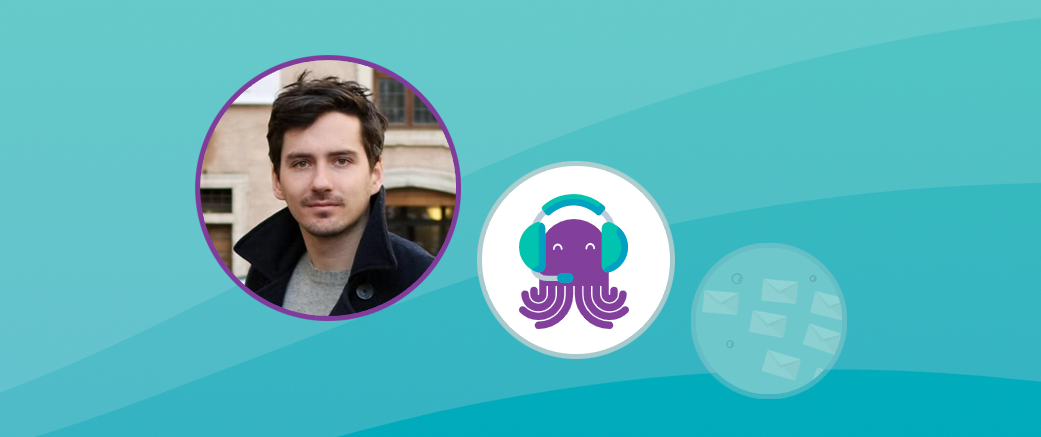

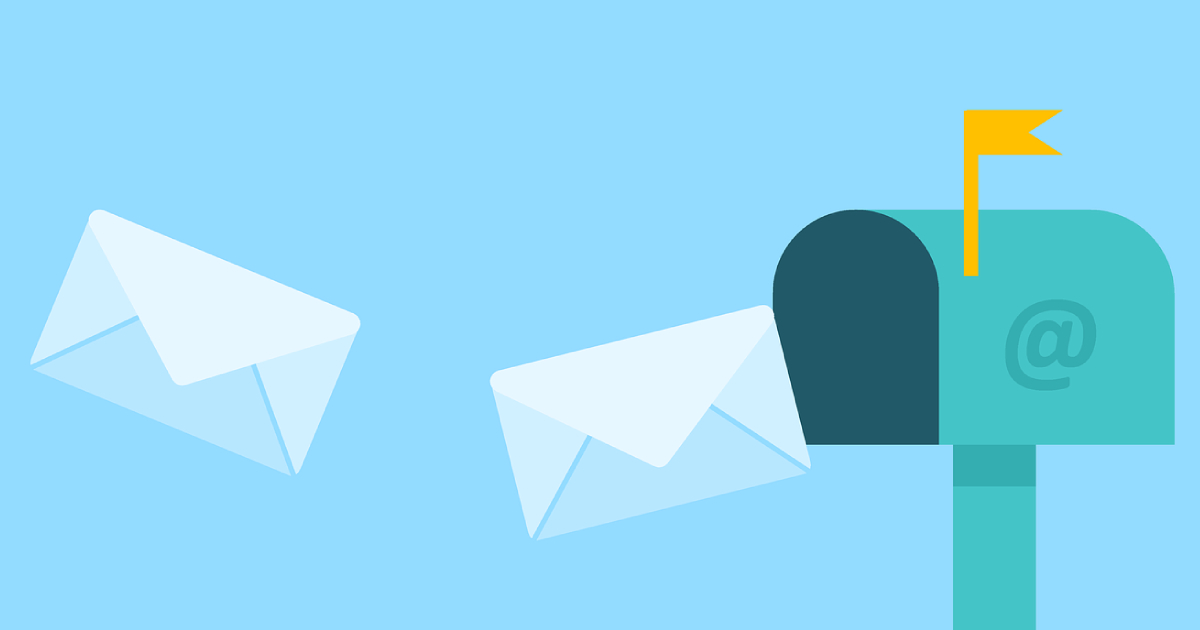
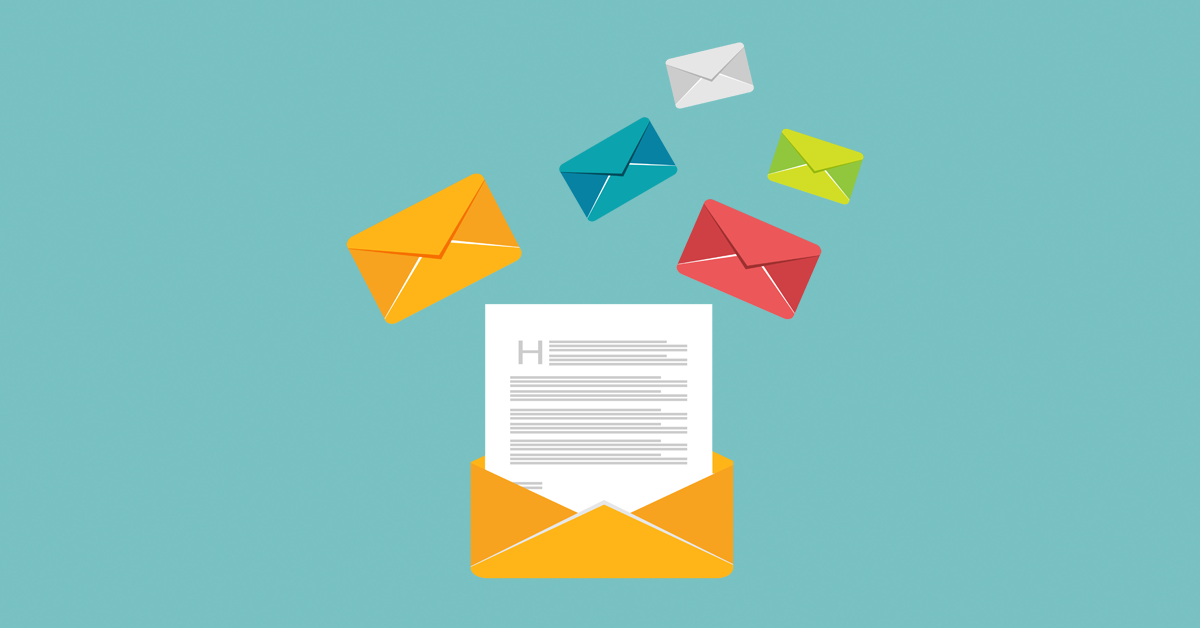

No Comments
Leave a comment Cancel